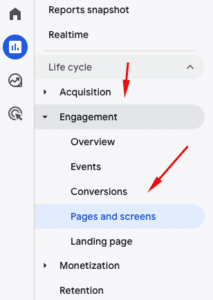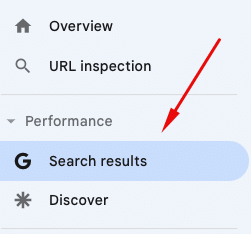Here is a phase you’ve probably read a zillion times: Content is king. However, it is not a cliché that, if executed well, content strategy is a crucial component of any marketing strategy.
Oh, but it does take a lot of effort to create content that you will benefit from.
Stats: 60% of the most successful B2B content marketers have a content strategy, as stated in the Content Marketing Institute’s annual report.
Let’s start from the basics, and we’ll dig deeper later on.
I’ll try to explain why your business needs a content strategy, and what are the steps to take to create one.
Disclaimer: I will recommend more sources and some tools, but they are not sponsored, or affiliated.
The TL; DR
(Key points)
First things first.
What is a content strategy?
A content strategy is a plan where you use content to reach your business goals. The idea is to drive traffic, attract and engage leads, increase sales and other great business outcomes, through (all sorts of) content. |
Now, you might be thinking Does my business need a content strategy? — Well, the benefits of having a content strategy are numerous. It isn’t just something that is nice to have, content is actually something that can help you to build trust among your audience, and help you to achieve all the perks that coke consequently.
What are the types of content?
Here are the 10 main, and most commonly used types of content:
1. Blog posts and articles
2. Social media posts
3. Videos
4. Podcasts
5. Ebooks, White papers, reports
6. Email newsletters
7. Cheat sheets, how-to guides
8. Case studies
9. Infographics
1. Blog posts
What & why: Blog posts can be published on any website, on the blog section, no matter what it’s called. Same goes for articles. One thing they have in common is that they should be published on a regular basis and provide (real) value, in order to attract new blog/website visitors.
Ideally, this content should be unique, informative, so the readers want to share it, save it, or quote it.
There are plenty of reasons why you should run a blog, here’re the main ones:
- It can help you to get website traffic
- It is a crucial part of SEO
- It can help you gain backlinks
- It can help you to convert visitors into leads
- It is a place to share company news
- It is a place where you can share your passion, and knowledge
- It can help you to gain exposure, awareness, authority
All in all, this type of content is great for covering almost any topic, and the benefits are numeros.
Content length: When it comes to the blog post length, there are several studies, yet I can agree with the saying that the best blog length for SEO in 2022 is 1,760-2,400 words, as stated in Hook Agency’s post.
A good example: This right here, what you are reading, is a blog post (…just in case you are a complete newbie in the digital marketing world).
2. Social media posts
What & why: No matter if you are a social media fan or not, one thing is certain — posting on social media can help you to reach potential customers/users where you know they spend their time.
You don’t always need to create new types of content for this matter, you can also repurpose blog posts.
Once you’ve been regularly publishing content on your site, start thinking about a social media strategy to distribute your content to a broader audience.
The key to having a successful social media strategy is to adjust your content to the platform’s audience and format trends. For example, if you want to be on Tik Tok, you should find ways to create engaging, creative, short-form videos that would appeal to a younger audience. LinkedIn, on the other hand, is good for corporate-related content that can get a good reach even without any visuals.
A thorough market research is a starting point when choosing, creating, or adjusting content for social media. Once you recognize which platforms your customers are active on, shape the content to their preferences…and post regularly.
Content length: it depends on the platform and type of content (written or video), but you should certainly focus on short-form content.
A good example: Check out these 52 Effective Social Media Post Ideas.
3. Videos
Stats: It’s estimated that in 2022, 82% of the entire internet traffic will come from videos (Cisco, 2019).
What & why: Even if the estimations are not that accurate, it is certain that the demand for videos is very high.
Videos are a very catchy content form, easy to share and popular across social media platforms.
Oh, but, yes — they require more effort than other types of content, that’s for sure. However, I assure you that the ROI can be great!
Content length: It is recommended that marketing videos should be two minutes or less.
A good example: Check out these examples of viral videos to get inspired.
4. Podcasts
Stats: By the end of 2025, there will be over 144 million monthly podcast listeners in the US., according to Insider Intelligence.
What & why: Starting a podcast can turn out to be a very profitable move. It is a great way to reach new audiences….especially ones that don’t have the time to read content every day.
Besides, if you have interesting people that you could invite as your guests — your opportunities are great, don’t miss them!
Content length: The ideal podcast episode length is determined by content, but I recommend you to produce at least 20 minutes of content. You can find more in-depth info here.
A good example: If you ask me, I’ll say TED talks, but these may not count as typical podcasts, right? I am sure that you’ll find more great examples here.
5. Ebooks, white papers,reports
What & why: Ask a marketer what is a lead magnet, and the odds are that the short answer would be — an ebook. Ebooks, white papers, reports…are all great hooks that website visitors can download after leaving their contact information (…that can afterward be used for marketing/sales campaigns).
Besides, all of the above mentioned can be the next step in the inbound marketing process — after reading an article, or a blog post, a visitor can get additional info.
Content length:
Ebooks are usually longer than blog posts, providing readers with more valuable, action based information. Basically, they offer something worth leaving your contact information to strangers. That being said, it is not expected that you publish an ebook per week .Rather, keep your focus on gathering useful content that you’ll wrap in an ebook afterward.
Same goes for white papers. The term whitepaper/ white paper is associated with many industries, which can be pretty confusing. For marketing purposes, you can look at whitepapers as an advanced, problem-solving guide, as explained at Hubspot.
Similar to ebooks, whitepapers are a great way to educate your audience about a specific topic (…and therefore promote your solution).
When it comes to the whitepaper content length, it varies on the topic, but they should be longer than blog posts, well-structured, and to seem very professional.
Reports can be not only a great lead magnet, but a great way to get many backlinks, quotations, mentions. Of course, this all goes if you provide your readers with some interesting stats, some valuable information that they can’t (or need to struggle) to find elsewhere.
Reports don’t necessarily need to be that long, as long as they are accurate and useful.
A good example: 75 Eye-Catching Ebook Examples to Inspire Your Creativity, The Best white paper examples for B2B marketers, and Hubspot’s reports.
6. Email newsletters
What & why: An email newsletter, as the name says, should be a piece of content, delivered via email, where you’ll wrap up some news, some relevant and valuable info about your company, industry, or anything that can be relatable. Promotions, coupons, gifts, affiliate programs, case studies, blog posts promotions…all of these are suitable to write about in a company newsletter.
Content length: The length of a newsletter should be email-friendly, you should aim for 200 words. As for visual content, yes, you can add some, but it isn’t necessary.
A good example: Check out these 15 Brilliant Newsletter Examples.
7. Cheat sheets, how-to guides
What & why: I bet you can remember a cheat sheet you used for your high school exam(s)? 🙂
Well, cheat sheets in marketing have the same purpose as that one — they’re designed to make smaller, tactical aspects of your overall strategy easier, as Uplandsoftware explained.
Content length: It is not about the form or length, but the value they offer (…as said many times before). They come in many forms: checklists, templates, worksheets, etc.
A good example: Hopefully, you’ll find my cheat sheets useful :).
8. Case studies
What & why: Writing about your success allows you to build credibility, but sharing someone else’s success story can also be beneficial. The goal is to demonstrate how your/someone else’s product or business achieved a remarkable result, but written in a way that a reader can learn something from it.
Content length: The reader should be able to get ideas, recognize some actionable steps, or at least get motivated. The thing is that case studies can take the form of a blog post, ebook, podcast, etc. so the length varies depending on the content form you choose. It’s up to your creativity!
A good example: The name of the article says it all: The 20 Best Case Study Examples That Boost Sales.
9. Infographics
What & why: Presenting data can be tricky. Infographics are a great way to organize data, to make it easy-to-understand. Besides, this content type can be re-shared easily across social media, blogs, etc. which means free links to boost your SEO rankings!
Content length: Usually, vertical Infographics are between 600-1100 pixels wide. As for the height, shorter infographics go about about 2000 pixels, and longer ones can up to 5000 pixels.
A good example: Ah, Pinterest is full of remarkable infographics. However, here’s an article that covers all the needed bases, and gives you great examples.
Questions to answer before you get started
To create any strategy you need to have a deep understanding of your business and its target audience. Same goes with compiling a content strategy. Here’s a list of questions you should answer in order to create an effective content strategy that will get you those desired results:
1. Who is your audience?
2. What problem can you solve?
3. Why should readers choose you?
4. Where will you publish your content?
5. What content formats will you create?
6. What’s working for your competitors?
7. How will you manage the needed operational tasks?
1. Who is your audience?
Well, if you have, or are starting a business, I assume that you already figured out your buyer/user persona(s). To create relevant content, you need to have a good understanding of what type of content would interest your user persona(s), what form of content would be the most relevant for them, on which channels should you distribute it?
For example, my user persona is a small (digital) business owner, who is most likely to consume content via email and instagram.
Here are some basic questions to start your brainstorm:
- What’s the average age and gender?
- What’s the education level and average income?
- Are there any typical hobbies or interests?
- Which forms of online content do they consume? Examples?
- What social networks are they active on?
- How do they research before making a purchase?
Tool to help you out: Hubspot’s Buyer Persona Generator
2. What problem can you solve?
No matter if you promote a product or a service, your content should reflect on a certain problem and to offer a solution.
For example, I want to provide you with content that will teach you how to grow your business online. It doesn’t necessarily mean that you don’t have a clue how to do it, perhaps you just want to deepen your knowledge (that is also a problem).
A good content strategy consists of content that will help readers to figure out new challenges. However, it also promotes educational content that will help them to find the solution themselves.
To give an example — perhaps you didn’t know that SEO and content are strongly correlated, but after you read some of my SEO-related content you realized that you should create a content strategy. And now you are reading another content that teaches you how to do it.
3. Why should readers choose you?
No matter what product/service you are offering, the odds are that there are a bunch of similar competitors out there. That’s why it is very hard to think of something that unique, but…think twice :). There is certainly something that you can point out: is it your experience, your clients, the technology your product is made on, creative design….etc.?
I aim to provide my audience with solutions backed by my experience that combine sales and online marketing. And that’s something I tend to highlight when I promote my work.
4. Where will you publish your content?
Now that you’ve figured out who you are writing for, you should be able to know where you will be posting. You should conduct a thorough research and define a couple of main channels, depending on your audience’s location, age, gender, and most of all – interests.
It is always a good starting point to check on which platform(s) are your competitors most active on, where can you find potential influencers, etc.
Of course, creating a social media strategy is a different topic, but defining the main channels where you’ll be active is certainly a starting point.
5. What content formats will you create?
Once you’ve narrowed down the list of channels you’ll be active on, it is time to do another research :). You need to learn which formats are the most popular on which platform.
For example, reels are becoming very popular on Instagram, but classic posts are still doing the trick. On the other hand, on Tik Tik, you can only create videos, so you can’t repurpose stuff you created for Instagram.
Next, if you opt for Youtube, apart from creating long form videos, you should have shorter versions for YouTube shorts, which are becoming more and more popular.
And so on.
Once you identify the best formats, start creating a budget to assess what resources you can allocate to execute this strategy.
6. What’s working for your competitors?
Checking out what your competition is doing is always a good idea. I mean, why to go blind when you can immediately filter out what your competitors have done successfully, and what can you do better.
Here are some questions you’ll want to keep in mind:
- How much traffic are they getting?
- What sources provide the most traffic?
- What keywords are they ranking for?
- What websites are linking to them?
- How well is their content performing?
- Are there any gaps in their content strategy?
The best tool for this is SEMRush. With SEMRush all you have to do is input your competitor’s URL and you’ll get information like:
- The organic keywords that send the most traffic
- The total number of keywords they rank for
- The pages that send the most traffic
- The top organic search competitors
7. How will you manage the needed operational tasks?
Having a plan is one thing, but executing it is where you can get stuck. It all depends on how many resources you have (time, manpower, budget).
You’ll need to figure out:
- Who will create the content (text and visuals)?
- Who will publish it and when?
- What’s the budget you have available for additional tools, or outsourced tasks?
The answers to the questions above may impact the content strategy you set up previously, but you should adjust it according to your possibilities.
Okay, finally — it is time to take actionable steps towards creating your content strategy.
Content strategy framework
1. Set a goal
2. Define your (content’s) target audience
3. Choose which content type(s) you will focus on
4. Create a pool of ideas
5. Create and manage your content
1. Set a goal
There’s a lot you can get out of a good content strategy. From brand awareness and SEO rankings, to new partners, customers…opportunities. But, you need to have a starting point.
Think about what you want to achieve with the content you are going to produce – short term and long term, and it will be much easier to define the next (actionable) steps.
2. Define your (content’s) target audience
Now it is time to clearly define the persona(s) you are going to target with your content. If you did a brainstorm (…as described a bit above) now you should be able to have a good understanding to whom you are addressing your content.
3. Choose which content type(s) you will focus on
Again, this is something you should have thought of previously, depending on the channels you’ll be publishing. Now it is time to determine which type of content you should, you can, and you want to create.
4. Create a pool of ideas
This is when things start to get serious! Think of content ideas, create a backlog and organize topics for each channel.
Here are some useful content idea generator tools to help you out:
- Impact’s Blog Title Generator
- Answer the Public
- HubSpot’s Blog Topic Generator
- BuzzSumo’s Question Analyzer
- Feedly
- SEOPressor’s Blog Title Generator
5. Create and manage your content
I assume that you’ve already figured out how you will create your content: will you be the one writing it, you’ll hire someone, you’ll create it but someone will proofread it afterwards…
However, once you have the content ready, you’ll need to organize it well. Create an editorial and social media calendar to keep track of your content creation, posting and promotion.
Pro tip: Talk to your audience in their language, not yours. Keep this in mind when creating content, no matter which form, or channel.
Here’s a quick reminder of the mentioned steps:
Measure the outcomes…and act accordingly
Measuring the results of your content marketing efforts is crucial for defining the next steps og your content strategy. I mean, you need to figure out if you are on the right track, does your audience like what they are seeing (…and reading), or you need to re-define the whole strategy.
Depending on the niche you are doing business in, you will focus on different metrics, but here are some basics to start from.
Tools to help you out: For this matter, I usually combine Google Analytics, Google Search Console, Ahrefs, and SEM Rush.
1. Google Analytics
How to get started: Learn how to set up everything in Google Analytic and understand the basic metrics here.
To see which one of your website’s pages had the most views, what’s the average time a user spends on a page, what’s the bounce rate, and the page’s value (if you have a transaction revenue on it) follow these steps:
2. Google Search Console
How to get started: Learn how to use Google Search Console here.
Similar to Google Analytics, in Google Search Console you can monitor which pages on your website have the most traffic, but also what keyword(s) brought them that traffic. Besides, you can find useful geolocation information, and other details.
3. Ahrefs
How to get started: How to use Ahrefs for content & SEO, here.
Ahfers is a powerful tool that you can use to find a lot of data useful for your content strategy.l As soon as you start exploring it, you’ll realize its potential, but here are some starting points:
- Check for which keywords your website is ranking organically, the rank of the keywords, what pages are bringing you the most (…and best) rankings:
- Find out how your pages are performing organically. An estimation of the monthly organic search traffic that a page can get from the keywords that it ranks for, the percentage share of traffic as compared to the website’s total organic traffic, the estimated value of a page’s monthly organic search traffic, etc.
- Discover how your content performs in terms of social sharing.
…and much more!
4. SEM Rush
How to get started: How to get started with SEM Rush, read here.
Another great tool that can be used for many purposes. Here’s an in depth explanation of how to leverage the tool to create optimized content.
You can:
- Analyze your existing content
- Find SEO recommendations to outrank your competitors
- Get ideas for your next articles
- Optimize your content
To wrap up: How to create a (better) content strategy
Creating a content strategy that will bring you results isn’t rocket science, but it certainly requires a lot of trial and error, planning, and brainstorming.
Of course, not every article you write, or a post you publish will be praised by a wide audience. Hey, but that doesn’t mean that you won’t figure it out eventually! Learn, plan, write, analyze. And then do it again, and again.
Content strategy FAQ:
Content strategy vs. content marketing strategy?
Content marketing is a part of the overall marketing strategy, aimed to attract, engage, and retain relevant audiences with content. Content marketing is the campaign itself, that comes after the strategy is put in place.
Is content strategy really important?
Yes. For many reasons.
- Content strategy can help you with retaining your audience.
- Content strategy can get you better traction.
- Content strategy can help you to build a relationship with your audience.
- Content strategy can position you, or your business as an authority in your industry.
- Content strategy can generate (quality) leads.
- Content strategy can help you rank on Google.
- Content strategy can improve your conversions.
- Content strategy can increase your brand awareness.
…and it can save money on your marketing strategy.
How often should I post?
It depends on which channel.
When it comes to social media, the algorithms are constantly evolving, but here are some recommendations for 2022:
Instagram: 3-7 times per week
Facebook: 1-2 times a day
LinkedIn: 1- 5 times a day
Tik Tok: 1-5 times a day
Twitter: 1- 5 times a day
As for website content, especially blog posts, as mentioned many times above in the article, the focus should be on the quality of the content you publish, not the frequency (same goes for social media!).
You can divide your content for one aimed at improving brand awareness (shorter blog posts) that you’ll publish 1-2 times per week, and longer ones ( for other purposes like SEO, education…) that you’ll publish 2-4 times per month.






